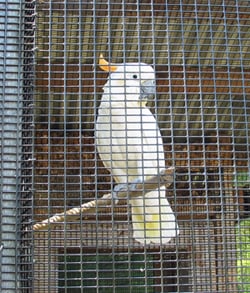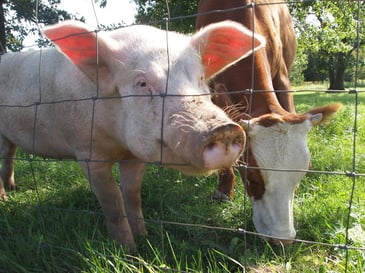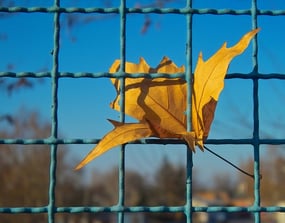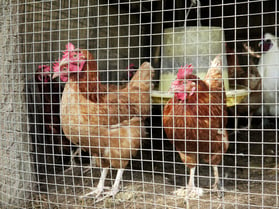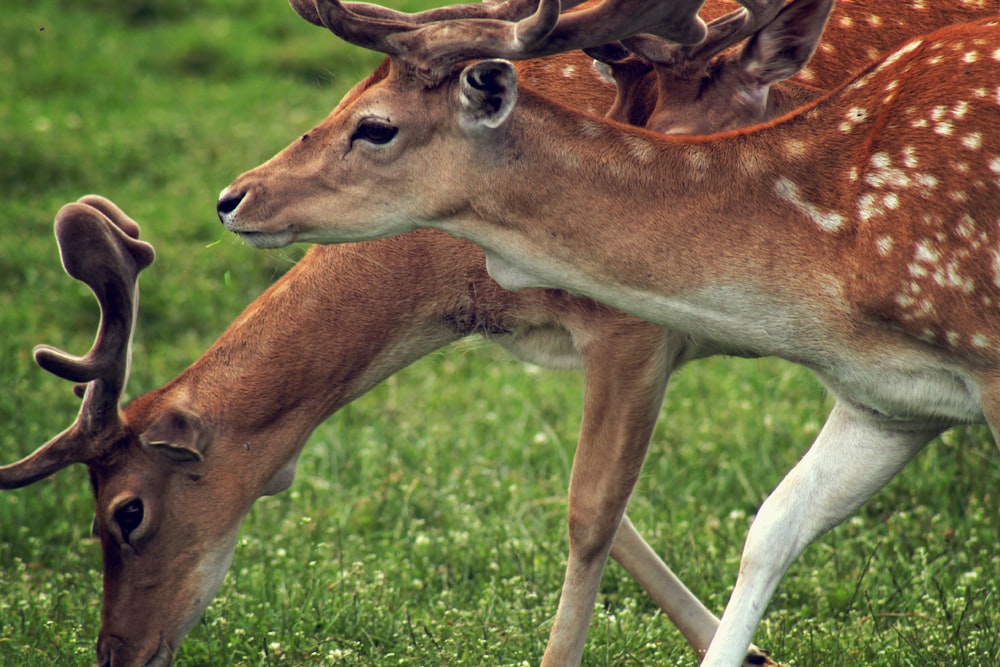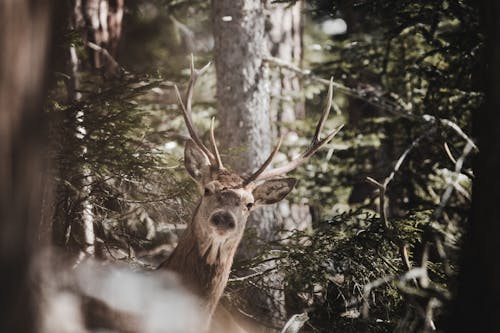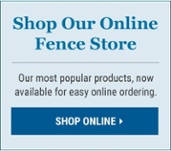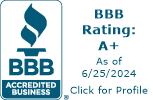What do your animals need?
Are you planning to get some animals that will need cages or pens?
Do you already have animals and need to upgrade, enlarge or improve their containment?
From hamsters to horses, birds to buffalo - there is a welded or woven wire mesh fencing available to do the job right.
Small Animal Enclosures
There are galvanized before, galvanized after, and vinyl-coated meshes available.
- Cages for canaries, for example, can be made using light weight galvanized after weave 1/2" hex netting
- For larger birds, welded meshes such as 1/2" x 1", 1" x 1", 1" x 2" and 1/2" x 3" can be used to make cages
- Chicken, turkeys and game birds require larger pens; galvanized after weave and vinyl coated hex netting works well for the sides and you can use welded wire meshes for ground wire; the extra galvanizing and vinyl coating extend the life of the wire
- Cages for rabbits, hamsters and the like can be made using 1/2" x 1"and 1" x 2" welded meshes; galvanized after weld products, when used, will last longest
Larger Animal Enclosures
Stronger meshes made from heavier gauge wire are required, and the opening size of the mesh can be larger.
- Dogs - smaller dogs can be contained with 16 gauge 2" x 2" woven or 2" x 3" welded wire mesh; for large dogs, 2" x 4" mesh works well; this is available in woven 12.5 gauge and welded 14, 12.5 and 11 gauge galvanized before, galvanized after and vinyl coated
- Horse corrals can be made with 12.5 gauge flexible woven horse fence in a 2" x 4" or diamond mesh pattern
- Secure enclosures for sheep and goats can be made using 12.5 gauge 4" x 4" woven mesh
- For ostrich & emu pens use 12.5 gauge 2" x 4" woven mesh
- Use field fence for cow pastures; there are different choices of 1047 style available
- Extra tall (up to 10') woven fences are excellent for deer and wildlife containment or exclusion
Care to share your own experiences?

